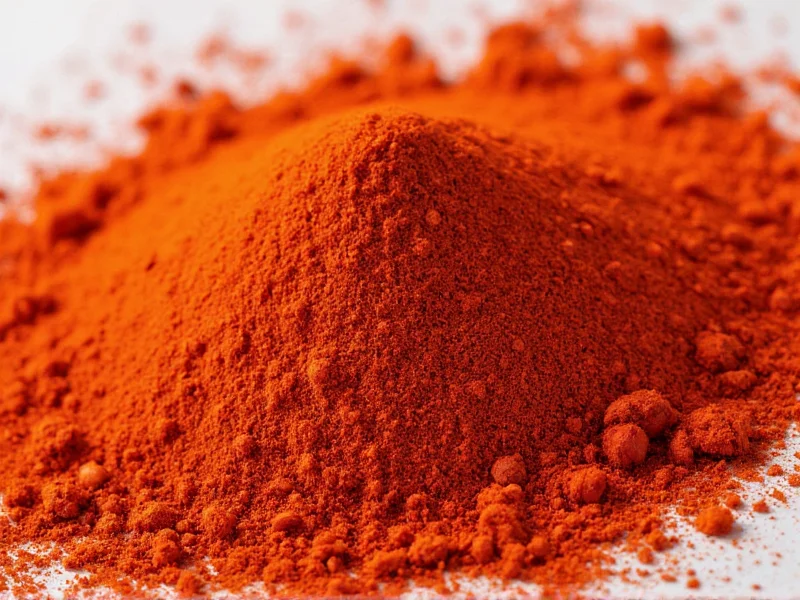Paprika isn't just a colorful garnish—it's a complex spice with diverse flavor characteristics that can transform your cooking. This comprehensive guide explores the nuanced taste profiles of different paprika varieties, their origins, and how to use them effectively in your kitchen.
The Essential Flavor Profile of Paprika
Derived from dried and ground Capsicum annuum peppers, paprika's flavor depends primarily on the pepper variety used and processing methods. Unlike many spices with a single dominant characteristic, paprika offers a spectrum of tastes that range from sweet to smoky to spicy.
Three Main Types and Their Distinct Flavors
Understanding the differences between paprika varieties is crucial for selecting the right one for your recipe. Each type brings unique characteristics to dishes:
| Type of Paprika | Flavor Profile | Heat Level (Scoville) | Best Culinary Uses |
|---|---|---|---|
| Sweet Paprika | Earthy, slightly sweet, mild pepper notes | 0-100 SHU | Goulash, deviled eggs, potato salad, rice dishes |
| Smoked Paprika (Pimentón) | Rich smokiness, deep earthiness, subtle sweetness | 100-2,000 SHU | Paella, roasted vegetables, barbecue rubs, bean dishes |
| Hot Paprika | Peppery heat with underlying earthiness | 5,000-15,000 SHU | Chili, stews, spicy marinades, Hungarian dishes |
Sweet Paprika: The Mellow Foundation
Sweet paprika, often called "Hungarian paprika" in culinary circles, provides a mild, earthy flavor with subtle sweetness and no significant heat. This variety forms the base for traditional Hungarian goulash and chicken paprikash. Its flavor profile contains hints of dried fruit and bell pepper without any noticeable spiciness. When shopping for sweet paprika, look for products labeled "édesnemes" which indicates the premium sweet variety from Hungary.
Smoked Paprika: The Flavor Transformer
Authentic smoked paprika, known as "pimentón" in Spain, undergoes a distinctive drying process where peppers are slowly smoked over oak fires. This traditional method imparts a complex flavor that's simultaneously smoky, sweet, and slightly bitter. The best smoked paprika varieties come from Spain's La Vera region and are labeled "pimentón de la Vera." Understanding what does paprika taste like when smoked reveals why it's become essential in Spanish cuisine and increasingly popular worldwide for adding depth to dishes without overwhelming heat.
Hot Paprika: The Gentle Heat
Hot paprika delivers noticeable warmth while maintaining the characteristic earthiness of the spice. Unlike cayenne pepper which focuses primarily on heat, hot paprika offers a more rounded flavor experience. Its moderate spiciness (typically 5,000-15,000 Scoville units) makes it versatile for adding warmth without dominating other flavors. Many cooks wonder is paprika spicy or sweet—hot paprika answers this question by providing both dimension: underlying sweetness with a definite kick.
Regional Variations and Their Flavor Impacts
Paprika's flavor varies significantly by region due to different pepper varieties and production methods:
- Hungarian Paprika: Considered the gold standard, with eight official classifications ranging from mild to hot. Hungarian sweet paprika has a distinctive fruity, almost raisin-like quality.
- Spanish Paprika (Pimentón): Famous for smoked varieties, with three main types—dulce (sweet), agridulce (bittersweet), and picante (spicy).
- Slovakian Paprika: Known for intense color and moderate heat, often used in traditional sausages.
- California Paprika: Typically milder and brighter in flavor, often used for color rather than deep flavor.
Paprika vs. Chili Powder: Understanding the Difference
Many home cooks confuse paprika with chili powder, but they're distinctly different. While paprika is made solely from ground peppers, chili powder typically contains a blend of spices including cumin, garlic powder, and oregano. When exploring what dishes use paprika, you'll find it works best when added toward the end of cooking to preserve its delicate flavor, whereas chili powder benefits from longer cooking times to develop its complex spice blend.
Maximizing Paprika's Flavor in Your Cooking
To get the most from paprika's flavor profile:
- Bloom in oil: Gently heat paprika in a small amount of oil for 30-60 seconds to release its aromatic compounds
- Add late in cooking: For sweet and smoked varieties, add during the last 5-10 minutes to preserve delicate flavors
- Pair with complementary ingredients: Works exceptionally well with tomatoes, garlic, onions, and fatty meats
- Store properly: Keep in an airtight container away from light and heat to maintain flavor for up to 6 months
Common Misconceptions About Paprika's Flavor
Several myths persist about this versatile spice:
- Myth: All paprika is spicy
Reality: Sweet paprika contains virtually no heat - Myth: Paprika is just for color
Reality: High-quality paprika contributes significant flavor dimension - Myth: Hungarian and Spanish paprika are interchangeable
Reality: They have distinct flavor profiles suited to different dishes - Myth: Paprika loses all flavor when cooked
Reality: While heat affects its flavor, proper technique preserves its essence
How to Select the Best Paprika for Your Needs
When choosing paprika, consider these factors to match the flavor profile to your recipe:
- Check the label for specific type (sweet, smoked, hot)
- Look for recent packaging dates—freshness dramatically impacts flavor
- Consider the origin—Hungarian for traditional dishes, Spanish for smoky applications
- Smell the spice—high-quality paprika should have a vibrant, aromatic scent
- Avoid products with additives like silicon dioxide or anti-caking agents











 浙公网安备
33010002000092号
浙公网安备
33010002000092号 浙B2-20120091-4
浙B2-20120091-4